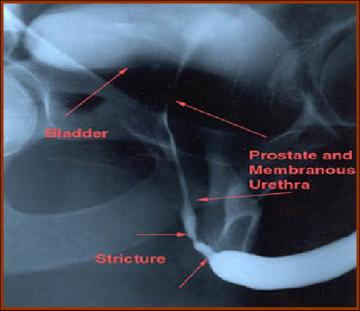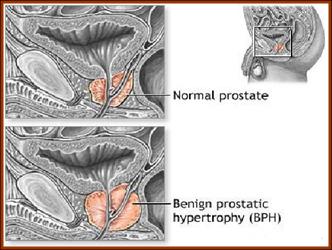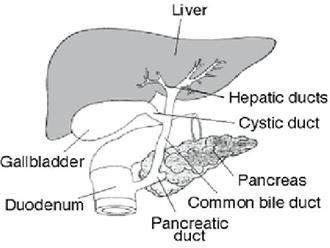













|
GALLSTONES
Gallstones form in the gallbladder, a pear-shaped organ located underneath the liver. The gallbladder stores bile that is produced by the liver. Bile is a fluid that breaks down fats and helps metabolize vitamins and nutrients from food. The gallbladder is a pouch, a holding area for bile when it is not in use between meals.
Gallstones resemble small pebbles and may range in size from barely visible to an inch in diameter. There are two types of gallstones.
The most common type is a cholesterol gallstone. When bile contains an excess of cholesterol, crystals form and drop to the bottom of the gallbladder where they form into stones.
The second type is the pigment gallstone, which occurs when the liver secretes too much bile pigment. Like excess cholesterol, these substances leave crystals, which fuse into stones that reside in the gallbladder.
In the great majority of cases, gallstones cause individuals no problems.
Cause: The reasons gallstones occur are not yet known. However, there is some evidence that excess weight, being female and aging are possible risk factors.
Symptoms: Severe pain in the upper portion of the abdomen occurring at indeterminate intervals is a primary sign of gallstones. Pain may also be experienced in the chest and back. Indigestion and an ongoing feeling of being sick to the stomach are other symptoms.
Treatment: Surgeons may remove the gallbladder. Acute infection in the gallbladder, or acute cholecystitis, can be treated with antibiotics. The recurrence rate of acute cholecystitis is high, and for this reason removal of the gallbladder is often recommended.
*BENIGN PROSTATIC HYPERTROPHY (BPH) is a non-cancerous enlargement of the prostate gland, commonly found in men over the age of 50.
What is Prostate Gland?
The prostate is a walnut-sized gland that forms part of the male reproductive system. The gland is made of two lobes or regions, enclosed by an outer layer of tissue. The prostate is located in front of the rectum and just below the bladder, where urine is stored. The prostate also surrounds the urethra, the canal through which urine passes out of the body. Its function is to squeeze fluid into the urethra while sperm moves during sexual climax.
Why does it enlarge?
It is common for the prostate gland to become larger as the age advances.Though the prostate continues to grow during most of man's life, the enlargement doesn't usually cause problems until late in life. Prostate enlargement shows symptoms at the age between 40s and 60s.
As the prostate enlarges, the surrounding capsule stops it from expanding, causing the gland to press against the urethra like a clamp on a garden hose. The bladder wall becomes thicker and irritable. The bladder begins to contract even when it contains small amounts of urine, causing more frequent urination. As the bladder weakens, it loses the ability to empty itself and urine remains behind. This narrowing of the urethra and partial emptying of the bladder cause many of the associated problems.
Throughout their lives men produce testosterone, an important male hormone and small amounts of oestrogen, the female hormone. As men age, the amount of active testosterone in the blood decreases, leaving a higher proportion of oestrogen. Research studies suggests that prostate enlargement may occur because the higher amount of oestrogen within the gland increases the activity of substances that promote cell growth.
Another study focuses on dihydrotestosterone, a substance derived from testosterone in the prostate, which may helps to control its growth. Some research has indicated that even with a drop in the blood testosterone level, older men continue to produce and accumulate high levels of dihydrotestosterone in the prostate. The accumulation of this substance may encourage the growth of cells.
What are the symptoms?
Many symptoms starting from obstruction of the urethra and gradual loss of bladder function results in incomplete emptying of the bladder. Most common ones involve changes or problems with urination. The sufferer have a hesitant, interrupted and weak stream. He may have urgency and leaking or dribbling with more frequent urination, especially at night.
Gradually the obstruction intensifies with the enlargement. Sometimes a man may not know if he has any obstruction until he suddenly finds himself unable to urinate. This condition is called Acute Urinary Retention and strain on the bladder can lead to urinary tract infections, bladder or kidney damage, bladder stones and inconti
What treatment is advisable?
Prostate enlargement can be easily detected by ultra sonogram study. The report will give proof of prostate enlargement with residual urine. Blood test PSA will rule out the intensity of lesion. Homoeopathy medicines has helped many patients to overcome this problem. Like the other applications for cells proliferation it has cured many other cases also. Homoeopathy medicines are clinically proved and cured many illnesses after dissolving masses like Warts, Papilloma, Lipoma, PCOD, Fibroid, Thyroid swellings etc. Since these applications have given wonderful results, we are now dragged more towards clinical interpretation and inspired to treat cancer also. Many of my colleagues and I have been su
Chronic Kidney Disease Stricture Urethra.............a problem of voiding urine
Stricture urethra is very common complaint noticed mostly in elderly persons.
What is stricture urethra?
Stricture urethra is an abnormal narrowing of the urethra. Urethral stricture may be caused by inflammation or scar tissue resulting from surgery, disease or injury. It may also be caused by external pressure from an enlarging tumour near the urethra although this condition is rare. It is very common among men who have a history of sexually transmitted disease, repeated episodes of urethritis. There is also increased risk of urethral stricture after an injury or trauma to the pelvic region.
What are the symptoms?
Usually the symptom starts with pain and difficulty in urination. The urine stream is very slow and may develop either suddenly or gradually: the urine output and urinary frequency is decreased, thereby urgency is increased. Sometimes patient gets scared to see blood in semen or urine. There is mild lower abdominal pain. Some victims experience discharge from the urethra and penis swelling.
How do we diagnose?
You may first notice symptoms of prostate enlargement by yourself. But your doctor may find that your prostate is enlarged during a routine check-up. Rectal Examination is usually the first test done. The doctor inserts a gloved-finger into the rectum and feels the part of the prostate next to the rectum. This gives him a general idea about the size and condition of the gland. Ultrasound may be recommended for accurate study. PSA -- Prostatic Specific Antigen -- could rule out malignancy. Stricture can be easily diagnosed by its symptoms and routine examination such as ultrasonography and cytoscopy.
What treatment is advisable
Clinically stricture urethra is often noticed with prostatic enlargement. Men who have prostatic enlargement with urethral stricture symptoms, usually need some kind of treatment at sometime. Most patients ignore the symptoms until they face a "acute crisis." Early treatment is needed when the gland is just mildly enlarged. During "crisis" dilation of the urethra may be attempted. It is a procedure adopted to stretch the urethra by inserting a thin instrument. Urethral stricture may totally block urine flow, causing acute urinary retention, a condition that must be alleviated quickly.
Homoeopathic medicines have wonderful power to resolve the scar tissue formation and enlargement. These are benign tumours. Their action is similar to a fibroid uterus, warts, lipoma and cancer. Homoeo medicines respond very well with non-specific urethritis and venereal infections. They also avoid surgery in maximum number of cases. |

|
TOP |